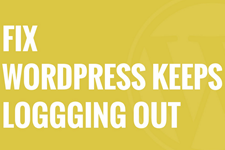
There are quantities of webmasters looking for the useful tips on how to speed up their Joomla websites after speeding up their WordPress sites and optimizing their Drupal sites successfully using the tips we put forward in our previous articles. Many of them have read plenty of related articles on the web but still don’t get the efficient methods.
A large number of Joomla users left us a message asking us to find the available and easy methods to speed up Joomla for them. To provide them with the best ways, we have read many articles online and related books. Besides, we have asked for suggestions from many experienced famous Joomla site owners. After trying the methods we got from the Internet, books and real people, we worked out the following helpful and efficient methods. Now, scroll down to learn the details.
Choose a Fast Joomla Hosting Provider
You need to know that even though you put very little content on your site, if your web host is slow, your site will loads very slowly. Therefore, one of the best methods to make your Joomla site run rapidly is to choose a fast hosting provider from thousands of options. We have reviewed 150+ Joomla hosting provider in the years and found the best hosting companies, among which BlueHost and InMotion are 2 the fastest hosts. The latter one delivers fast hosting service by providing free SSD and using 2 first-class data centers and their own Max Zone Speed technology.
Enable Joomla Caching
 If Joomla caching is not enabled, this software has to do many things each time someone loads one of you pages, such as fetching the content from its database, loading all installed modules, plugins and components, and your template file, and combining all content in one page. This process takes time, making your site loading time longer. However, once you enabled cache, all actions the CMS has to do are stored, so your following visitors are able to get the stored version of each page, reducing page loading time.
If Joomla caching is not enabled, this software has to do many things each time someone loads one of you pages, such as fetching the content from its database, loading all installed modules, plugins and components, and your template file, and combining all content in one page. This process takes time, making your site loading time longer. However, once you enabled cache, all actions the CMS has to do are stored, so your following visitors are able to get the stored version of each page, reducing page loading time.
Enable Joomla Compression
Another method to optimize page loads is to enable the internal Joomla compression system. Once you have done this thing, each page of your site will be compressed before it is transferred to your visitors. Through compression, the size of each page becomes smaller than before. In this way, they are able to load much faster, making your whole site run rapidly.
Use CDN Service
Tens of millions of WordPress users are using CDN service to optimize their WordPress sites. Therefore, Joomla users are also able to make their sites run faster using this service. In the industry, there are numerous companies specializing in offering CDN service and many web hosts offering this kind of service for free. Months ago, we selected top 5 CDN providers after reviewing dozens of companies. Besides, we found several best hosting companies providing free CloudFlare, like A2Hosting.
Add .htaccess Optimization Rules
 Adding several rules at the end of the .htaccess file is a useful method to improve a Joomla site’s performance. Rules include ETag telling browsers when a downloaded image can be fetched from the local browser cache, Expire headers giving users the ability to set different expiration times for different file types and another rule minifying the source code by removing empty spaces, breaks and lines.
Adding several rules at the end of the .htaccess file is a useful method to improve a Joomla site’s performance. Rules include ETag telling browsers when a downloaded image can be fetched from the local browser cache, Expire headers giving users the ability to set different expiration times for different file types and another rule minifying the source code by removing empty spaces, breaks and lines.
Remove Needless and Suboptimized Extensions
You may have downloaded many extensions to optimize a Joomla site, but you need to know that each added extension requires disk space, database and server resources to operate. Therefore, using too many extensions enlarges the overall size of a site and makes it slower. To prevent the 2 things, you need to remove all the unused and suboptimized extensions. Besides, when choosing extensions, you need to know their features clearly and read the real user reviews.
Reduce Image Size
Images are big part of a site. However, big images make a site slow. Therefore, you need to optimize images on your site and reduce their size. Browsers needs more time to scale big images that are scaled using HTML, so you need to reduce the size of images you plan to put on a site. Besides, adding too many images to 1 page making site seem messy and load slow. Thus, control the number of images of each page also makes a site run faster.
















